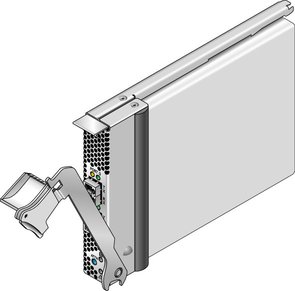| Skip Navigation Links | |
| Exit Print View | |

|
StorageTek 4 Gb FC Dual Port ExpressModule HBA From Emulex Installation Guide For HBA Models SG-XPCIE2FC-EB4-Z and SG-PCIE2FC-EB4-Z |
| Skip Navigation Links | |
| Exit Print View | |

|
StorageTek 4 Gb FC Dual Port ExpressModule HBA From Emulex Installation Guide For HBA Models SG-XPCIE2FC-EB4-Z and SG-PCIE2FC-EB4-Z |
HBA Features and Specifications
2. Hardware Installation and Removal
Observing ESD and Handling Precautions
Testing the Installation (Oracle Solaris)
To Verify Proper Installation (Oracle Solaris)
To Verify Attached Storage (Oracle Solaris)
Configuring the HBA for Hot-Plug Operation
Configuring the HBA for Hot-Plug Operation
To Prepare the HBA for Removal Using the HBA Attention Button
To Prepare the HBA for Hot-Plug Removal (for Oracle Solaris)
Driver Software for the Oracle Solaris OS
Oracle Solaris Diagnostic Support
Installing Software for the Red Hat and SUSE Linux OSs
To Install the HBA Software for Linux OS
Installing Software for Windows Server 2003
To Install the Software for Windows Server 2003
Configuration and Diagnostic Utilities
Oracle Solaris 10 for x64/x86 Operating Systems
Red Hat Enterprise Linux 4 and SUSE Linux Enterprise Server 9 Systems
The hardware installation process involves the following general steps:
Figure 2-1 The HBA With Its Latch Pulled Out

Note - The HBA does not allow normal data transmission on an optical link unless it is connected to another similar or compatible Fibre Channel (FC) product (that is, multimode to multimode).
|
Figure 2-2 Two Optical Cables Connecting to the HBA

After the optical cable is connected to the HBA, you are ready to apply power to the system. If power is already applied to the system, proceed to Configuring the HBA for Hot-Plug Operation.
The following table summarizes LED indicator combinations. Refer to LEDs and the Attention Button to determine the location of the LEDs. Each port has a corresponding set of LEDs that provide a visual indication of the operating state.
|
Figure 2-3 LEDs and the Attention Button
